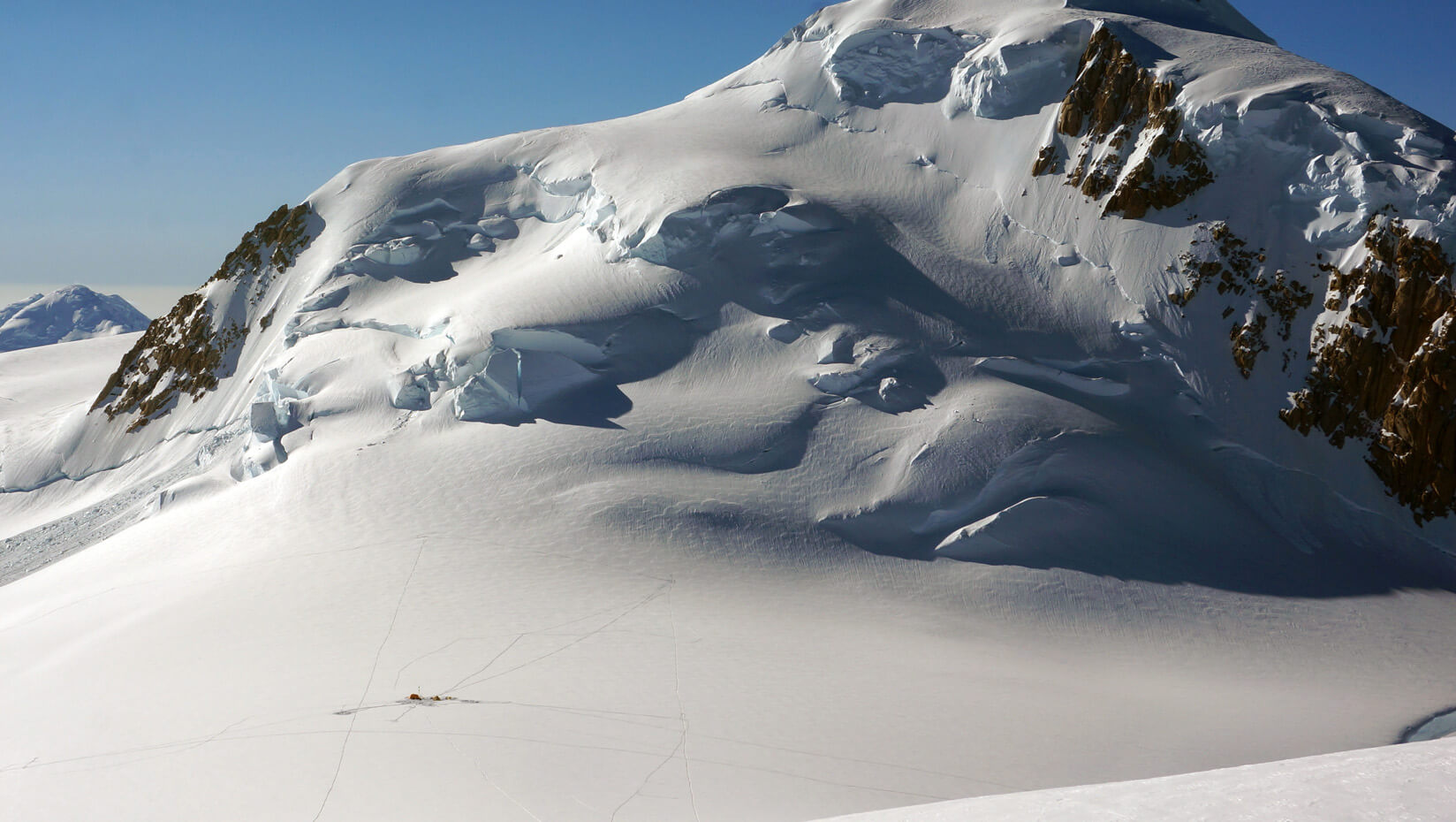
Kreutz to examine 10,000-year-old ice to learn more about Pacific Ocean drivers of Arctic warming
Karl Kreutz and colleagues previously discovered from ice cores from Alaska’s Mount Hunter that a doubling of snow accumulation and 60-fold increase in summer melt since the 1850s — the industrial era — is linked to warming in the Tropical Pacific Ocean.
The movement of heat from the Pacific, through Alaska, and into the Arctic contributes to Arctic amplification, or the rate of warming in the Arctic that’s much higher than that in lower latitudes.
This climate pattern is called Pacific multidecadal variability.
It alters upper level atmospheric winds and affects coastal sea and continental surface air temperatures from Alaska to California. It can affect Pacific and Atlantic hurricane activity, droughts and flooding around the Pacific basin, as well as the productivity of marine ecosystems, and global land temperature patterns.
Those initial Mount Hunter results suggest the recent changes are unique in the last 1,000 years, says Kreutz, a University of Maine scientist.
Now, Kreutz will examine whether those same drivers also are relevant for the entire Holocene — the last 11,700 years of Earth’s history since the end of the last major “ice age.”
“The recent, rapid changes in Arctic climate have important implications not only for the high northern latitudes, but mid-latitudes as well,” says Kreutz, a professor with the Climate Change Institute and School of Earth and Climate Sciences.
“To fully understand these changes, we need to look at and learn from previous warm periods in Earth history. The early Holocene is one of those warm intervals. We hope to learn a great deal about how and why the Pacific Ocean drives Arctic amplification from it.”
The National Science Foundation has awarded Kreutz $333,031 for a study titled “Evaluating North Pacific hydroclimate during the Holocene using the Denali ice core archive.”
Colleagues Andrei Kurbatov, Dominic Winski and Seth Campbell will join Kreutz for the three-year research project that begins June 1.
The team will concentrate on the bottom 20 meters of the twin 208-meter surface-to-bedrock cores. Preliminary radiocarbon isotope analyses demonstrate the ice that’s close to the base of the glacier is more than 10,000 years old, says Kreutz.
The international project also will support and mentor the next generation of ice core scientists, including Winski and at least one Ph.D. student.
UMaine, in collaboration with Colorado State University and the National Park Service, also will construct STEM educational kits — based on the Mount Hunter ice core record — that target youth in grades 4–12. UMaine will support the distribution and use of the kits in Alaska and Maine schools.
Kreutz says the team’s ongoing relationship with Denali National Park staff, including scientists, climbing rangers, educators, and administrators, as well as regional park service providers, including those providing air transportation and flightseeing, fosters opportunities for extensive public outreach.
Contact: Beth Staples, beth.staples@maine.edu

